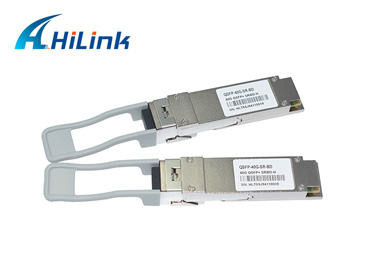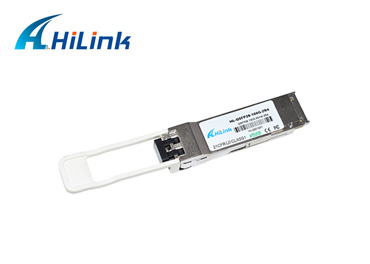Basic Principles of SFP Transceivers
Aug. 06, 2022
Trying to know the capabilities of those small network devices can cause confusion. Determining which transceiver and specifications are best for your network may be a bigger challenge. To avoid confusion,hilinktech.com has created a quick-answer list of basic questions on SFP to assist you to get your network up and running.
1. What's an SFP transceiver?
Let's start with the fundamentals. SFP stands for "Small Pluggable". SFP transceivers are compact and hot-pluggable devices that will act as an interface between network devices (switches, routers, network cards) and interconnect cables (copper or optical fiber).
LC 40G QSFP+ BIDI SR4
SFP transceivers have various specifications, allowing users to customize their network equipment to satisfy their specific needs. Because SFPs are hot-pluggable, they also allow users to simply modify or upgrade the network infrastructure. consistent with the various types (SFP, SFP+, QSFP, QSFP+), SFP transceivers are available in single-mode and multi-mode and may transmit data from a minimum of 500m to a maximum of 80km, and supply from 10 Mbps to 40 Gbps.
2. What makes the varied SFPs different?
There are countless SFP transceivers and SFP cables on the market, so what makes them unique, and the way does one know which is best for you? The first difference users got to consider is distance. does one need short-range (SR) SFP or long-range (LR) SFP?
Hilink 100G QSFP28 ZR4 Optical Transceiver
Single-mode SFP transceivers can transmit distances from 2 kilometers to 80 kilometers. Standard single-mode SFP can transmit up to 10 kilometers, while extended single-mode SFP can transmit up to 80 kilometers.
For shorter distances and cheaper options, multi-mode SFP may be a good solution. Standard multimode SFP can transmit up to 500m, while extended multimode SFP can transmit 2km. Transmission rate Another aspect to think about when choosing SFP is the transmission rate. What speed does your network need?
3. What about Third-Party SFP Compatibility?
When it involves purchasing an SFP, compatibility together with your network switch is critical. many purchasers are under the impression this suggests that you simply need to buy the OEM SFPs to make sure of compatibility. While this is often always an option, OEM SFPs often carry high price tags and supply less variety. this is often where third-party SFPs fill the gap to supply multiple compatible options at considerably lower cost points. Many third-party SFP manufacturers not only guarantee compatibility with OEM switches but also meet or exceed OEM transceivers in performance, reliability, and warranty.
Our networking solutions are including FWDM, DWDM CWDM OLP, MPO AAWG, etc. In order to provide better service for our customers, we also supply other kinds of related fiber optical products. Our products and solutions are largely applied in cloud computing, data center, networking access, and so on. If you want to get more information about the best optical fiber transceiver, welcome to contact us today or request a quote.













